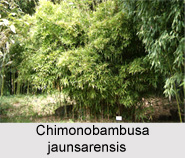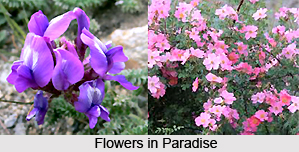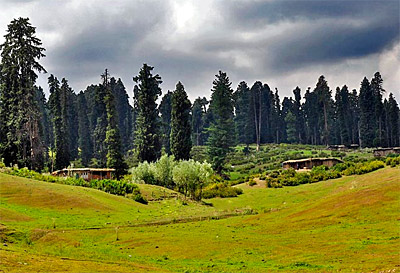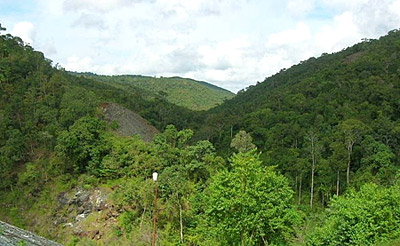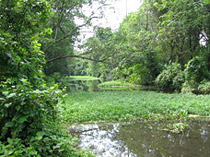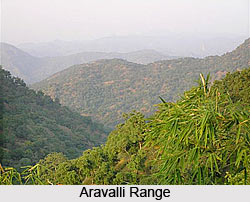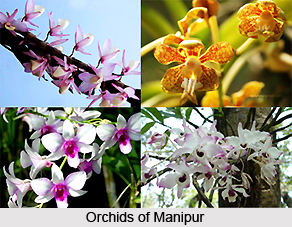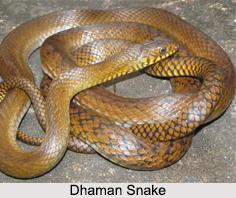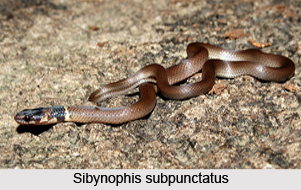 Sibynophis Subpunctatus which is also commonly known as Dumeril`s Black-Headed Snake or Jerdon`s many-toothed snake is a species of non-venomous colubrid snake endemic to Bangladesh, India and Sri Lanka.
Sibynophis Subpunctatus which is also commonly known as Dumeril`s Black-Headed Snake or Jerdon`s many-toothed snake is a species of non-venomous colubrid snake endemic to Bangladesh, India and Sri Lanka.
Habit of Sibynophis Subpunctatus
Sibynophis Subpunctatus is active by day as well as at night.
Concentration of Sibynophis Subpunctatus
Sibynophis Subpunctatus occurs in Bangladesh, the Western Ghats Mountain Range in India and in Sri Lanka. In India Sibynophis Subpunctatus is found in Maharashtra state in Pune district.
Distribution of Sibynophis Subpunctatus
There are distribution records from Mulshi, Pune district, and also Solapur has been frequently cited. The Specimens of Sibynophis Subpunctatus from the Northeast of India are probably those of Sibynophis Sagittarius. In Sri Lanka it is found mostly towards the west coast from Puttalam to Kalutara. Sibynophis Subpunctatus and Sibynophis Sagittarius are also seen in Palghar District.
Habitat of Sibynophis Subpunctatus
Sibynophis Subpunctatus lives in leaf litter, preying on geckos, skinks, and smaller snakes. Sibynophis Subpunctatus has seventeen rows throughout the body with a series of dots.
Size of Sibynophis Subpunctatus
Sibynophis Subpunctatus grows in the maximum size of 18 inches (46 cm).
Scale of Sibynophis Subpunctatus
Sibynophis Subpunctatus has the rostral scale nearly twice as broad as deep. Suture between the internasals, a little shorter than that between the prefrontals; frontal longer than its distance from the end of the snout, as long as the parietals or a little shorter; loreal longer than deep; one preocular; two postoculars, both in contact with the parietal; temporals 1 (or 2) + 2; 9 or 10 upper labials, fifth and sixth, or fourth, fifth, and sixth, entering the eye. Eighth upper labial usually excluded from the labial margin, simulating a lower anterior temporal. 4 Lower Labials in contact with the anterior chin shields, the first lower labial usually separated from its fellow by the mental; posterior chin that shields a little longer than the anterior chin shields.
Dorsal Scale of Sibynophis Subpunctatus
Sibynophis Subpunctatus has the dorsal scales in 17 rows. Sibynophis Subpunctatus has the Ventrals 151-220 and anal divided. The Subcaudals of Sibynophis Subpunctatus has 47-76.
Colour of Sibynophis Subpunctatus
Sibynophis Subpunctatus has the pale brown above, with a vertebral series of small round black spots; usually a more or less distinct dark lateral line or series of dots; head and nape dark brown or black. Lips, canthus rostralis, a transverse line between the eyes, and two broad cross-bands, one in front and one behind the nape. All yellow; the dark colour often extending along the median line, bisecting the yellow collar. Lower surfaces are yellow, each shield with a black dot near its outer border.
